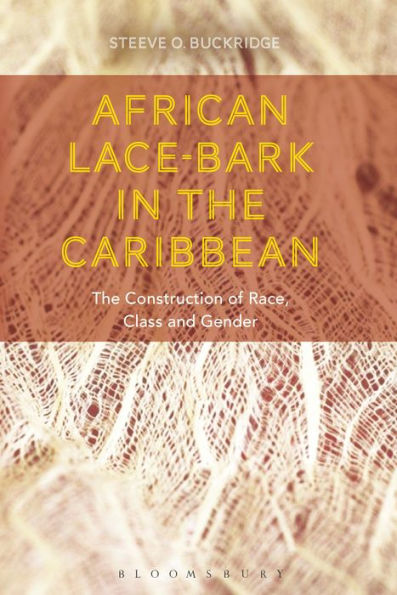African Lace-bark in the Caribbean: The Construction of Race, Class, and Gender
In Caribbean history, the European colonial plantocracy created a cultural diaspora in which African slaves were torn from their ancestral homeland. In order to maintain vital links to their traditions and culture, slaves retained certain customs and nurtured them in the Caribbean. The creation of lace-bark cloth from the lagetta tree was a practice that enabled slave women to fashion their own clothing, an exercise that was both a necessity, as clothing provisions for slaves were poor, and empowering, as it allowed women who participated in the industry to achieve some financial independence.
This is the first book on the subject and, through close collaboration with experts in the field including Maroon descendants, scientists and conservationists, it offers a pioneering perspective on the material culture of Caribbean slaves, bringing into focus the dynamics of race, class and gender. Focussing on the time period from the 1660s to the 1920s, it examines how the industry developed, the types of clothes made, and the people who wore them. The study asks crucial questions about the social roles that bark cloth production played in the plantation economy and colonial society, and in particular explores the relationship between bark cloth production and identity amongst slave women.
1122627537
This is the first book on the subject and, through close collaboration with experts in the field including Maroon descendants, scientists and conservationists, it offers a pioneering perspective on the material culture of Caribbean slaves, bringing into focus the dynamics of race, class and gender. Focussing on the time period from the 1660s to the 1920s, it examines how the industry developed, the types of clothes made, and the people who wore them. The study asks crucial questions about the social roles that bark cloth production played in the plantation economy and colonial society, and in particular explores the relationship between bark cloth production and identity amongst slave women.
African Lace-bark in the Caribbean: The Construction of Race, Class, and Gender
In Caribbean history, the European colonial plantocracy created a cultural diaspora in which African slaves were torn from their ancestral homeland. In order to maintain vital links to their traditions and culture, slaves retained certain customs and nurtured them in the Caribbean. The creation of lace-bark cloth from the lagetta tree was a practice that enabled slave women to fashion their own clothing, an exercise that was both a necessity, as clothing provisions for slaves were poor, and empowering, as it allowed women who participated in the industry to achieve some financial independence.
This is the first book on the subject and, through close collaboration with experts in the field including Maroon descendants, scientists and conservationists, it offers a pioneering perspective on the material culture of Caribbean slaves, bringing into focus the dynamics of race, class and gender. Focussing on the time period from the 1660s to the 1920s, it examines how the industry developed, the types of clothes made, and the people who wore them. The study asks crucial questions about the social roles that bark cloth production played in the plantation economy and colonial society, and in particular explores the relationship between bark cloth production and identity amongst slave women.
This is the first book on the subject and, through close collaboration with experts in the field including Maroon descendants, scientists and conservationists, it offers a pioneering perspective on the material culture of Caribbean slaves, bringing into focus the dynamics of race, class and gender. Focussing on the time period from the 1660s to the 1920s, it examines how the industry developed, the types of clothes made, and the people who wore them. The study asks crucial questions about the social roles that bark cloth production played in the plantation economy and colonial society, and in particular explores the relationship between bark cloth production and identity amongst slave women.
29.49
In Stock
5
1

African Lace-bark in the Caribbean: The Construction of Race, Class, and Gender
216
African Lace-bark in the Caribbean: The Construction of Race, Class, and Gender
216
29.49
In Stock

Product Details
| ISBN-13: | 9781472569318 |
|---|---|
| Publisher: | Bloomsbury USA |
| Publication date: | 07/14/2016 |
| Sold by: | Barnes & Noble |
| Format: | eBook |
| Pages: | 216 |
| File size: | 11 MB |
| Note: | This product may take a few minutes to download. |
About the Author
From the B&N Reads Blog
